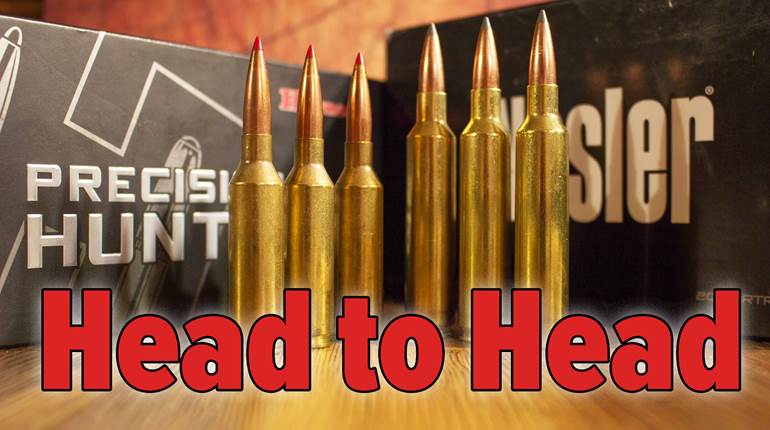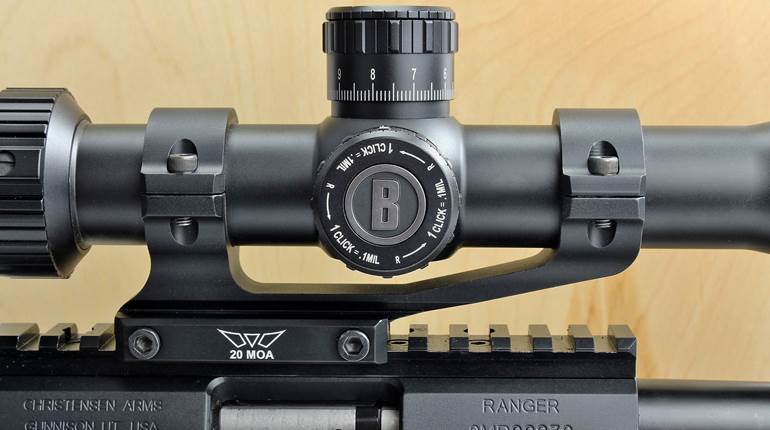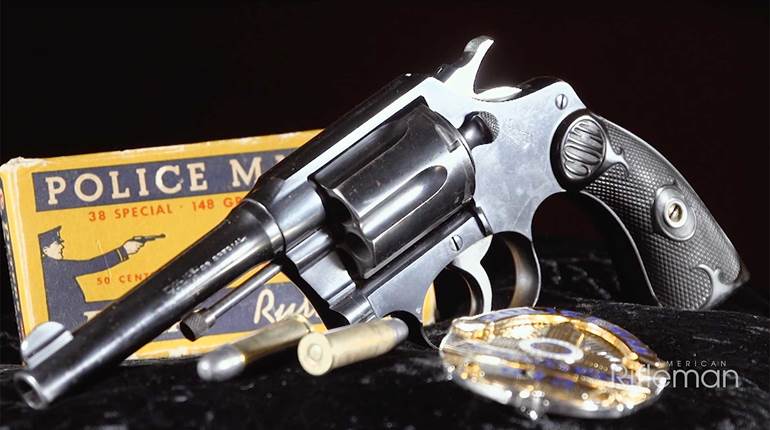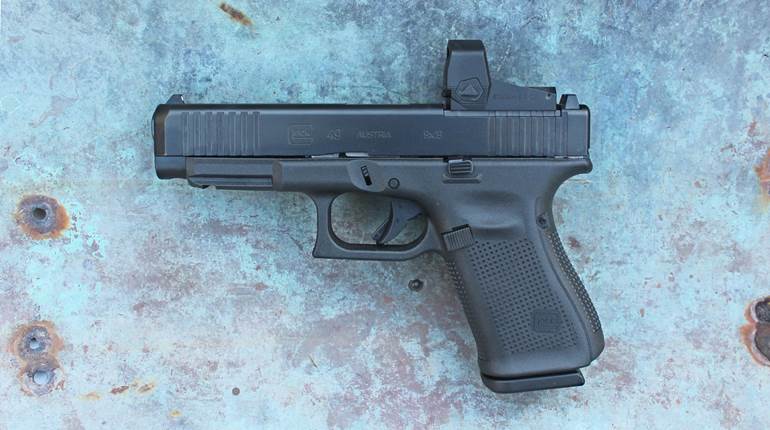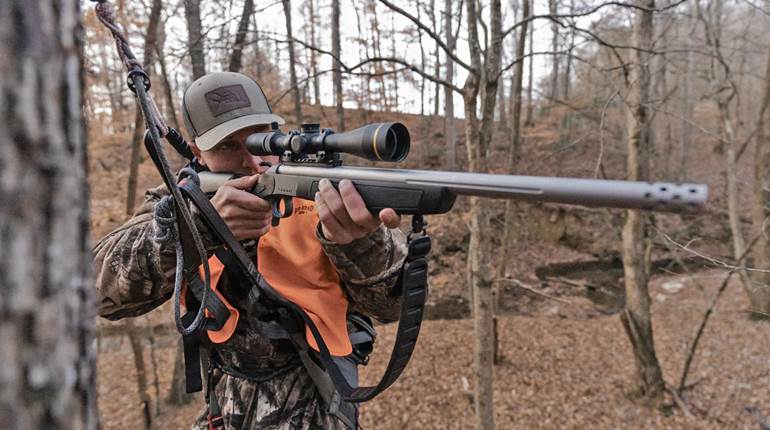Styles change in anything made by humans, whether it be clothing, vehicles, food or hunting rifles. Half a century ago miniskirts were considered scandalous by high school principals, suburbanites drove station wagons instead of minivans and SUVs, families ate TV dinners in their living rooms, and rifle manufacturers were trying to steal some of Roy Weatherby's magic.
Of course, technology often influences style. Weatherby rifles became popular not just because their stocks went nicely with tailfin Cadillacs, but because Weatherby cartridges produced more muzzle velocity than any other cartridges. America's Interstate highway system was spreading rapidly from coast to coast, and our space rockets were aiming for the moon. We wanted to go faster and farther in every way possible, and Roy Weatherby's magnums helped hunters keep up.
Today faster and farther isn't quite what it used to be. Many of our Interstates are over-crowded, nobody has moved to the moon, and $200 laser rangefinders transformed mild little cartridges into long-range wonders. So why would anybody introduce a super-fast, super-flat-shooting cartridge such as the .26 Nosler?
The answer lies in the fact that America is diverse. Some hunters now feel 12-lb. rifles with blocky synthetic stocks and scopes resembling plumbing fixtures are even sexier than camouflage pickup trucks, especially when paired with a smartphone's ballistic app. Other hunters cling to more traditional rifles, some with primitive walnut stocks, and still want a cartridge that shoots flat enough to go computer-free in the wilderness. (Of course, traditionalists may just be math-challenged, another trend in 21st-century America, but that's another subject.)
Traditionalists also lean toward less specialized hunting rifles than long-range rigs designed to be shot primarily from prone or (in an emergency) sitting. This dictates an overall weight of less than 10 lbs., with a stock relatively friendly to offhand shooting. Both the .26 Nosler cartridge and its rifles straddle the two worlds, partly because 6.5 mm is the cutting-edge caliber in modern hunting rifles.
While some long-range hunters use 6 mm, 7 mm, .30- or even .33-cal. cartridges, none of their bullets have quite the same combination of high ballistic coefficient (BC), sufficient weight, and moderate recoil as 6.5 mm. The high BC guarantees enough zip for bullet expansion at the greater distances, and is less influenced by wind. (While laser rangefinders made flat trajectory almost irrelevant, they don't help judge an erratic breeze.) Tolerable recoil is desirable, even for hunters who aim "right on" a big-game animal's chest, because longer-range shooting requires much practice, and extended sessions at the range with a hard-kicking rifle can make even American hunters flinch.
Nosler introduced its boattail, polymer-pointed Ballistic Tip bullet in the 1980s, which made a noticeable difference in long-range trajectory and wind-drift. I can still remember the prairie dog hunt where several of us discovered the .223 Rem. was essentially transformed into a .22-250 Rem. by the use of 50-gr. Ballistic Tips. The same advantage occurred with thicker-jacketed "hunting" Ballistic Tips, plus the bonded version of the Ballistic Tip called the AccuBond-and, eventually, plastic-tipped bullets introduced by other companies.
But with the laser-rangefinder revolution, many hunters demanded even sleeker bullets. Some began to lobby for a bonded Very Low Drag (VLD) bullet, and in 2013 Nosler obliged with the AccuBond Long Range (ABLR). The 6.5 mm ABLR weighs 129 grs., a traditional European weight, with a listed G1 ballistic coefficient of .561, and the initial .26 Nosler factory load starts the 129-gr. ABLR at 3400 f.p.s. from a 26" barrel.
According to the Point Mass Ballistic Solver computer program included with Bryan Litz's fine book Applied Ballistics For Long-Range Shooting, when sighted-in at 325 yds. with a typical scope height of 1.75" over the bore, the 129-gr. ABLR is 2.78" above point of aim at 100 yds., 3.94" high at 200, still 1.31" high at 300, and only 5.6" down at 400. And that's at standard atmospheric conditions: sea level, 59º F. at a barometric pressure of 29.92 mb. Change the conditions to those typical during rifle season in the Montana mountains where I live, say 7,000 ft. above sea level and at 35º F., and the load shoots even flatter. Of course, that assumes our hunter can hold correctly for the wind, but with a 10-m.p.h. full-value breeze, drift is only 8" at 400 yds.
Interestingly, Nosler designed its new cartridge to fit in a so-called .30-'06 Sprg.-length action, with a maximum cartridge overall length of 3.34". This is also the length of the former fastest 6.5 in America, the .264 Win. Mag., introduced in 1959 to compete with the Weatherby cartridges. Back then a .30-'06 Sprg.-length magnum was a smart idea, because a seemingly endless supply of 98 Mauser and 1903 Springfield actions could be had for a few bucks. It probably still isn't a bad move today, partly because the "long" version of Nosler's own action has a .30-'06 Sprg.-length magazine, and if somebody decides to build a custom .26 Nosler on a longer action there will be plenty of room to seat high-BC bullets out a little more-another trend in long-range rifles.
Of course, as soon as the .26 Nosler was announced, shooters started speculating about every possible detail, especially on the Internet, the mother-ship of people who don't know much and aren't afraid to go public. One guy said it was obvious that the .26 Nosler would fry barrels in short order, because "everybody" knows that's true of the .264 Win. Mag. Another said the cartridge would be useless for woods hunting, because a shorter barrel would reduce the velocity to .270 Win. levels. Another said he didn't see any need for yet another factory cartridge, because the wildcat .300 magnum he uses produces much more powerful long-range ballistics. Some, of course, questioned both Nosler's listed muzzle velocities and the 129-gr. ABLR's ballistic coefficient.
Let's look first at the ballistic coefficient. Bryan Litz continually researches long-range ballistics by actually firing bullets in actual rifles, and has come to the conclusion that the 129-gr. ABLR's ballistic coefficient is exactly as Nosler claims-but only when shot from a barrel with a 1:8" rifling twist. Litz's latest research, detailed in his new book Modern Advancements In Long Range Shooting, indicates that high-BC bullets lose about 3.2 percent of their ballistic coefficient for each .1 reduction in gyroscopic stability factor (Sg) below 1.5". A barrel with a 1:8" twist gives the 129-gr. ABLR an Sg of 1.62 at standard sea-level atmospheric conditions, and Litz's tests indicate Nosler's BC is basically spot-on. (These days the G7 BC is considered more accurate for long-range bullets, and Nosler lists it at .285.)
In mid-summer of 2014 I extensively tested a Nosler Model 48 Patriot rifle chambered in .26 Nosler. The Patriot is Nosler's lowest-priced rifle, but still features the same Oregon-made actions and the Pac-Nor barrels used on all Model 48s. This particular Pac-Nor is what Nosler calls a "magnum" contour, measuring 0.632" at the muzzle, and is 26" long with a 1:8" rifling twist. An examination through my Hawkeye bore scope showed a very smooth bore, with the beginnings of each of the five lands at exactly the same point in front of the chamber. The trigger broke cleanly at an average pull-weight of 2 lbs., 11 ozs., and the pillar-bedded synthetic stock was painted gray with black "drizzles," and included a 1"-thick Pachmayr Decelerator pad.
The scope used was my own 10X 40 mm Leupold Mark 4, in Precision Reflex mounts attached to steel Picatinny-type bases. This scope has proven totally reliable on a bunch of rifles during the past several years, and features precise 1/4 minute-of-angle (m.o.a.) adjustments. The scope and rings brought the rifle's total weight to 9 lbs., 12 ozs., which is actually considered a little light by some long-range hunters. For more conventional hunters, a typical 1"-tubed 3.5-10X in Talley Lightweight rings would drop the weight a half-pound or so.
The pair of Nosler Trophy Grade factory loads tested featured the 129-gr. ABLR at a listed 3400 f.p.s. and the 140-gr. AccuBond at 3300 f.p.s., and both velocities were essentially right-on when shot over an Oehler 35P chronograph on a 70-degree July morning. The rifle turned out to prefer a "dirty" bore: The first five-shot group with the 129-gr. ABLR measured slightly larger than 2", but the five subsequent groups averaged a tad larger than an inch. For modern hunters used to three-shot groups, this converts to three shots in less than 3/4", probably well under. (The Nosler website says that "shooters can expect sub-m.o.a. three shot groups at 100 yards" with Trophy Grade ammunition in the Patriot rifle.)
Recoil seemed to be slightly less than that of a 7 mm Rem. Mag. with 160-gr. bullets, though obviously felt recoil is affected by stock fit. The very straight stock fit my short neck and square shoulders pretty well, and the recoil calculator in the Sierra Infinity computer program agreed with my shoulder.
During the test-firing the rifle was sighted-in 2¼" high at 100 yds. with the 129-gr. ABLR load. According to the Litz ballistic program this would put it dead-on at 300 yds.
A few days later, on another calm morning at very close to the same temperature, I drove out to several sections of Bureau of Land Management country broken by several long coulees, and shot three rounds at a target 300 yds. away. The group measured slightly less than 2", centered right around the aiming point. I then ranged a few distant targets on handy cutbanks, cranked the Leupold's elevation knob the appropriate amount, and drilled every target at ranges out to around 550 yds., the bullets seeming to arrive almost instantly after pulling the trigger. Yes, the listed ballistic coefficient of the 129-gr. ABLR is correct, and the .26 Nosler shoots very fast and flat.
By the end of the testing, well more than 100 rounds had zipped through the barrel-many while shooting five-round groups without much time between the shots. The bore scope revealed a little erosion at the "corner" of the throat, right in front of the neck of the chamber, but the beginning of the rifling, perhaps 1/8" in front of the chamber, was still pristine. Unless somebody decides to take their .26 Nosler prairie dog shooting, my educated guess is that the barrel will remain accurate for at least 1,000 rounds, and 1,000 shots takes in a lot of big-game hunting.
Just before finishing the test-shooting, a freshly printed Montana pronghorn tag arrived in the mailbox, for an area just north of the small town where I live. An exceptional buck had already staked out his breeding territory on some big flats in the northern end of the tag's area. He should still be there in early October when the season opens, which sounds like another fine test for the .26 Nosler.














